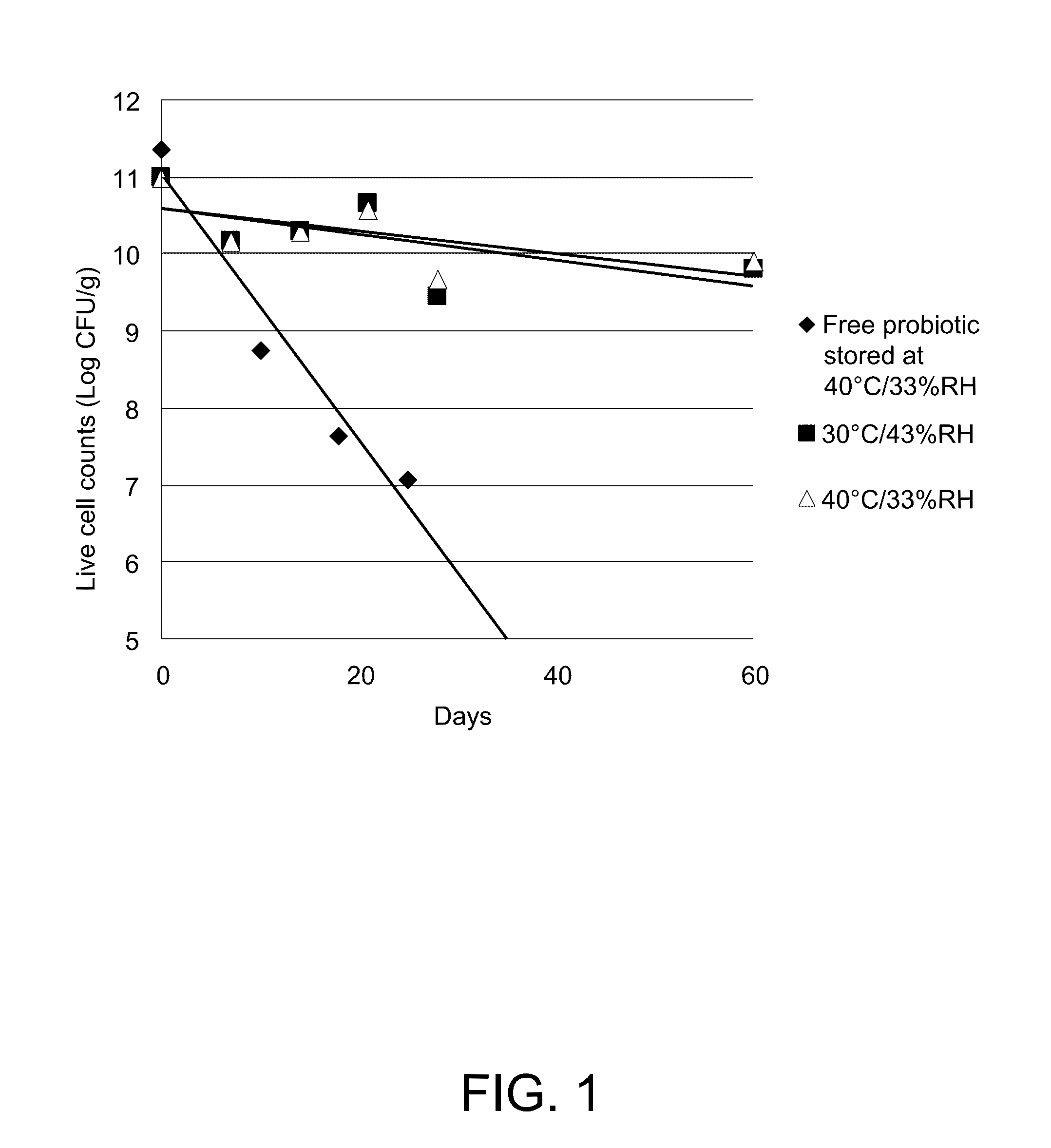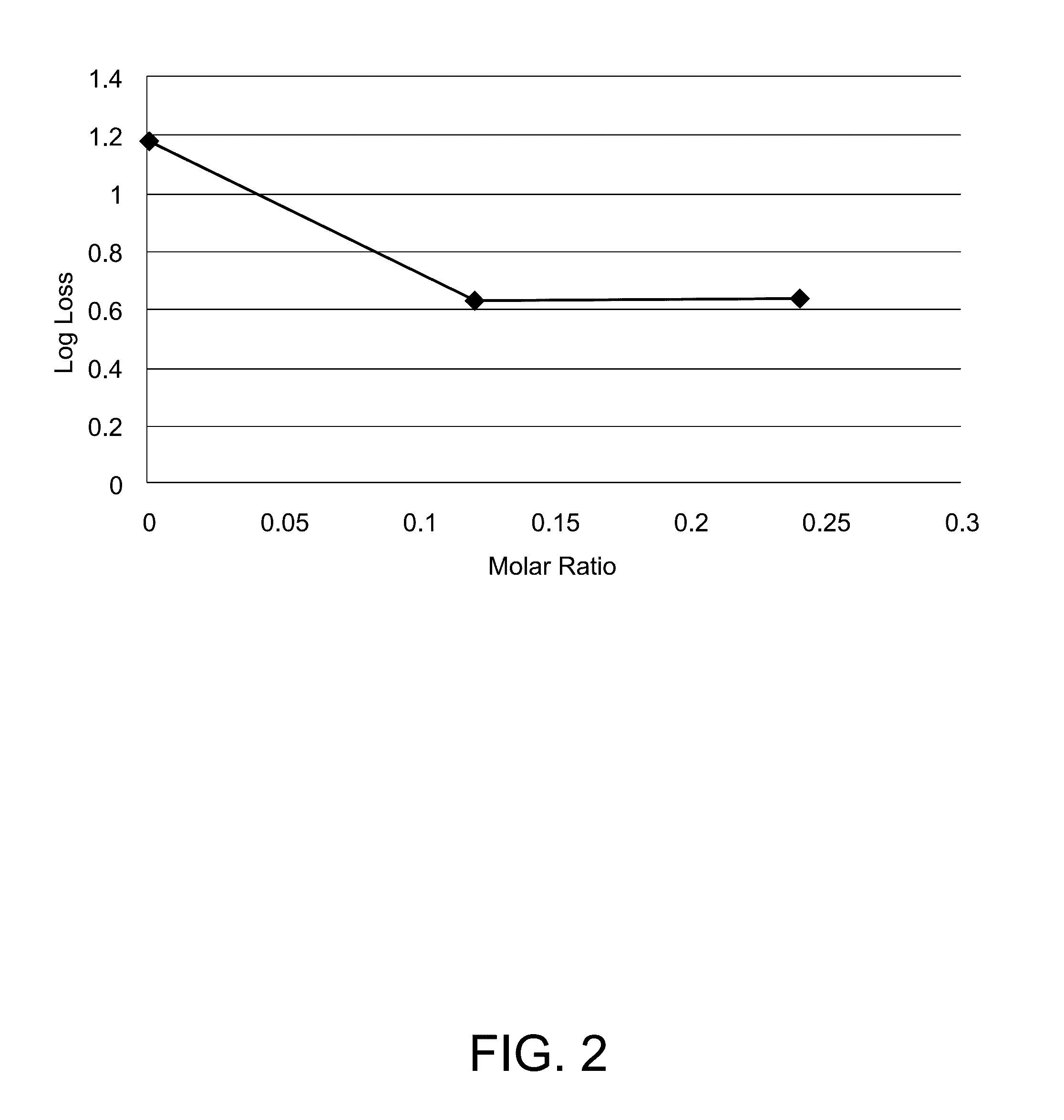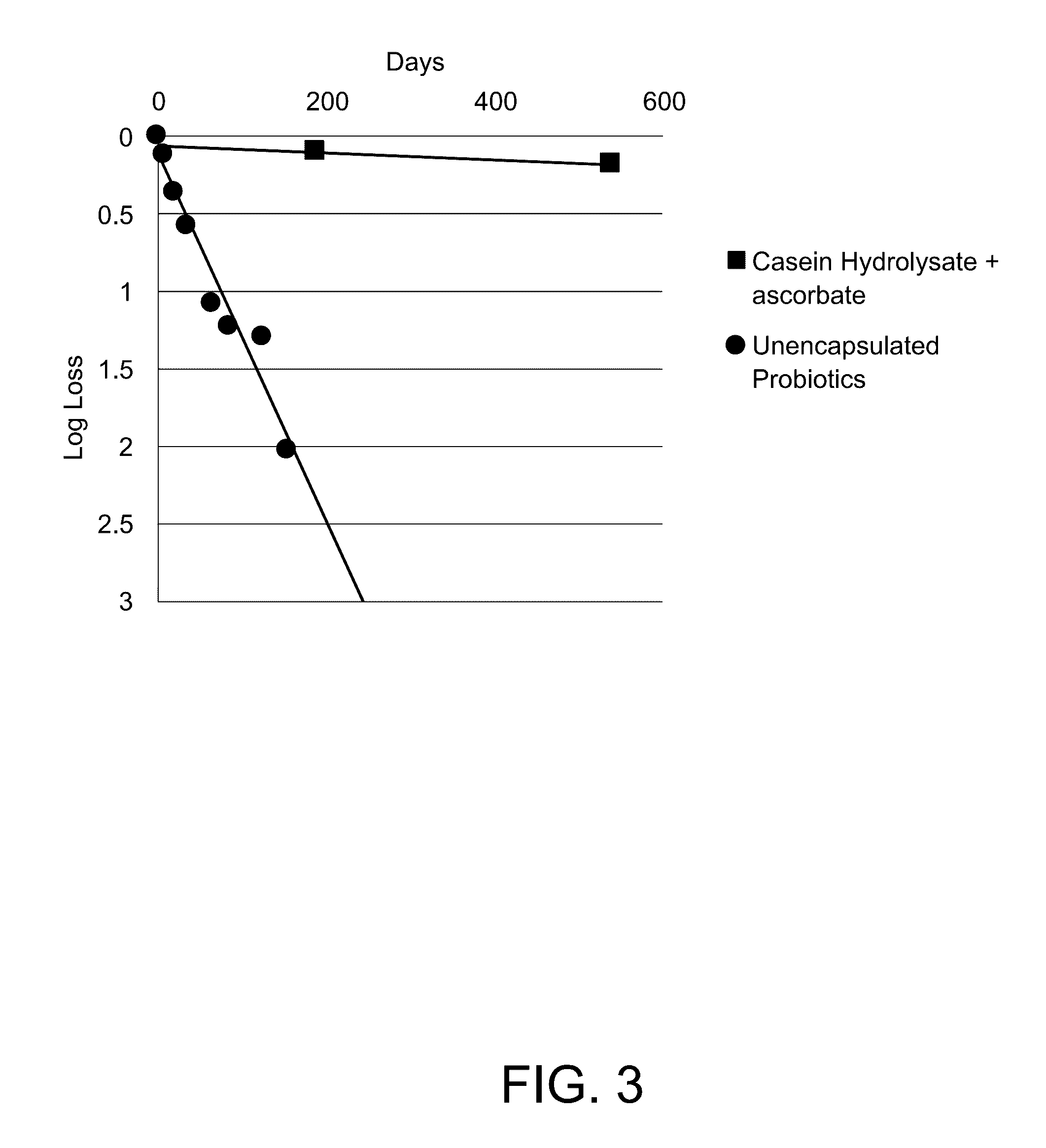Stabilizing composition for biological materials
a technology of biological materials and compositions, applied in the direction of macromolecular non-active ingredients, powder delivery, milk preparation, etc., can solve the problems of affecting the stability of biological materials, so as to reduce the water activity and reduce the water activity
- Summary
- Abstract
- Description
- Claims
- Application Information
AI Technical Summary
Benefits of technology
Problems solved by technology
Method used
Image
Examples
example 1
Preparation of Dry and Stable Composition
[0096]Basic Carbohydrates Mixture
[0097]About 70 g of trehalose (Cargill Minneapolis, Minn.), about 5 g of instant Inulin (Cargill Minneapolis, Minn.) and about 3 g of sodium alginate (ISP Corp., Wayne, N.J.) were uniformly mixed in dry form.
Basic Glass Enhancers Mixture
[0098]About 17 g of casein hydrolysate or pea hydrolysate (ultra filtrated hydrolysates, Marcor, Carlstadt, N.J.) and 5 g of sodium citrate or sodium ascorbate (Sigma, St. Louis, Mo.) were uniformly mixed in dry form.
[0099]Stabilization of Probiotic Bacteria
[0100]Fresh concentrate of Lactobacillus rhamnosus. (100 ml at 10% solids, direct from fermentation harvest) was added in a blender and maintained at 35° C. About 78 g of basic carbohydrates mixture and about 22 g of the basic glass enhancer mixture were slowly added to the probiotic culture and mixing was carried out at 35° C. for 10 minutes. The viscous slurry was then transferred to a vessel having a perforated bottom and...
example 2
Storage Stability of the Dry Probiotic Bacteria
[0103]FIG. 1 shows the storage stability under two different accelerated storage conditions of 40° C. and 33% RH and 30° C. and 43% RH of dry stable probiotic bacteria from Example 1 and commercially available dry probiotic bacteria (Culturelle, Amerifit, Inc., Cromwell, Conn.). The commercial probiotic bacteria completely lost its viability within the first few weeks under the accelerated storage conditions, while the dry composition of the probiotic bacteria of the present invention lost only 1.18 logs after 60 days at 30° C. and 43% RH and only 1.09 logs at 40° C. and 33% RH.
example 3
Scale-Up Production of Stable Dry Composition Containing Probiotic Bacteria Lactobacillus rhamnosus
[0104]Lactobacillus rhamnosus (400 g frozen concentrate from a commercial source) was thawed at 37° C. in a jacketed dual planetary mixer (DPM, 1 qt, Ross Engineering, Inc. Savannah, Ga.,) and the solid content adjusted to 10% solids wt with distilled water). About 212 g of trehalose (Cargill Minneapolis, Minn.), about 20 g of instant Inulin (Cargill Minneapolis, Minn.), about 12 g of sodium alginate (ISP Corp., Wayne, N.J.), about 136 g of casein hydrolysate (ultra filtrated hydrolysates, Marcor, Carlstadt, N.J.) and about 20 g of sodium ascorbate (Sigma, St. Louis, Mo.) were uniformly mixed in dry form. The powders mixture was slowly added to the probiotic culture and mixing was carried out at 40 RPM and 37° C. for 10 minutes. The slurry was then transferred to a vessel having a perforated bottom and allowed to drip into a bath containing liquid nitrogen. The beads were then removed...
PUM
| Property | Measurement | Unit |
|---|---|---|
| temperature | aaaaa | aaaaa |
| RH | aaaaa | aaaaa |
| RH | aaaaa | aaaaa |
Abstract
Description
Claims
Application Information
 Login to View More
Login to View More - R&D
- Intellectual Property
- Life Sciences
- Materials
- Tech Scout
- Unparalleled Data Quality
- Higher Quality Content
- 60% Fewer Hallucinations
Browse by: Latest US Patents, China's latest patents, Technical Efficacy Thesaurus, Application Domain, Technology Topic, Popular Technical Reports.
© 2025 PatSnap. All rights reserved.Legal|Privacy policy|Modern Slavery Act Transparency Statement|Sitemap|About US| Contact US: help@patsnap.com



